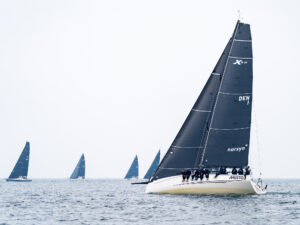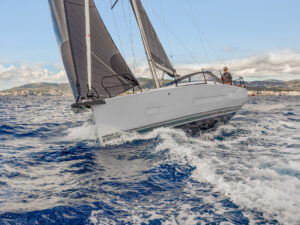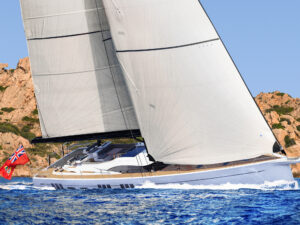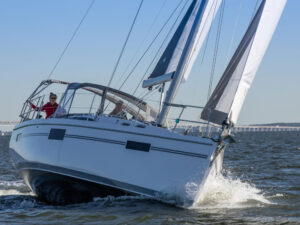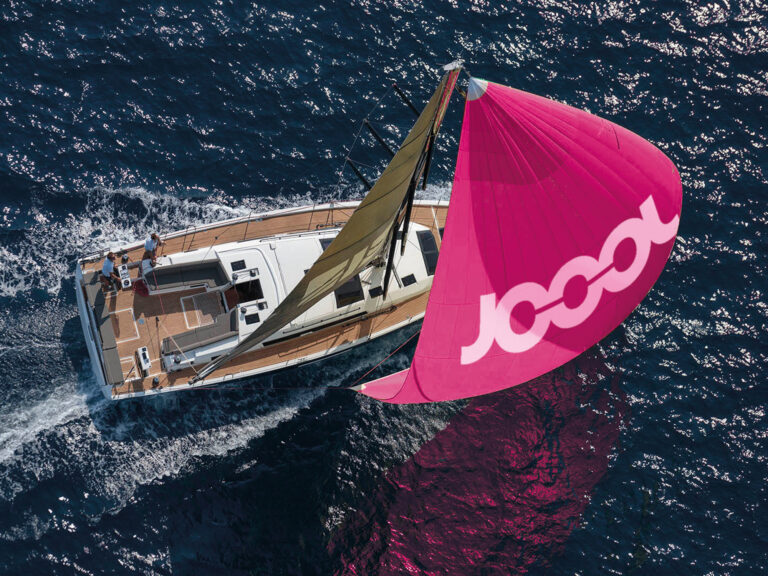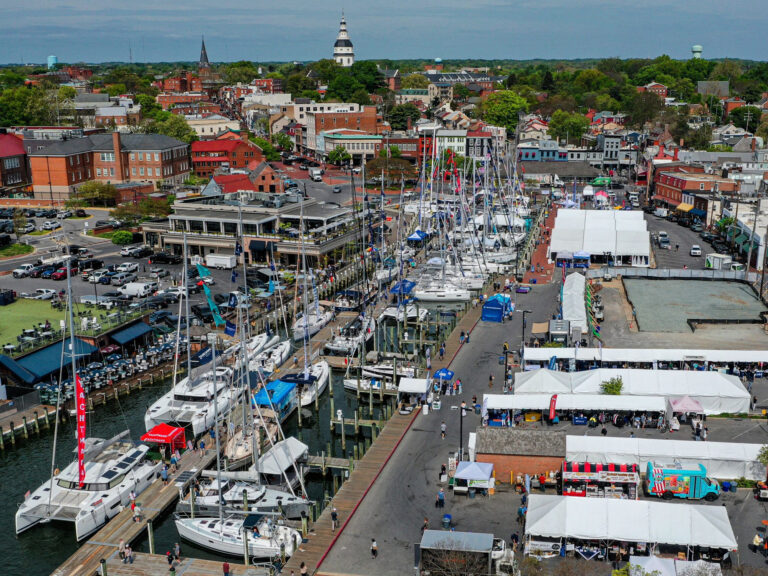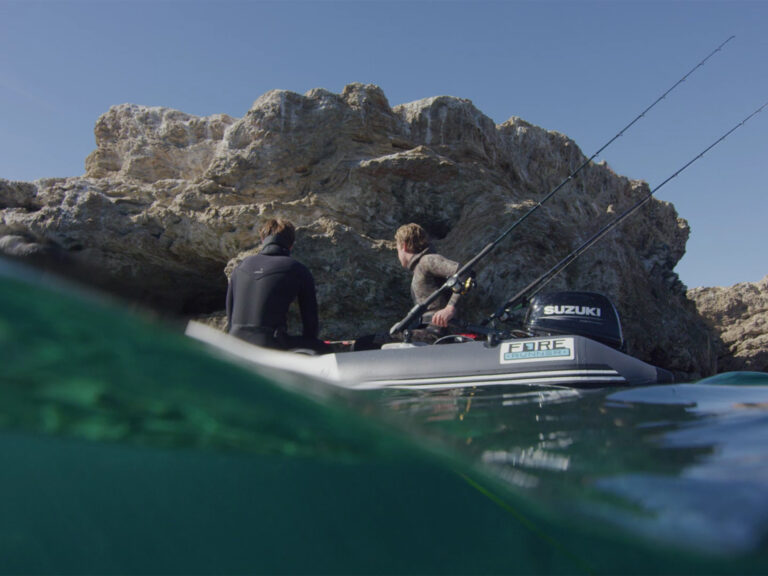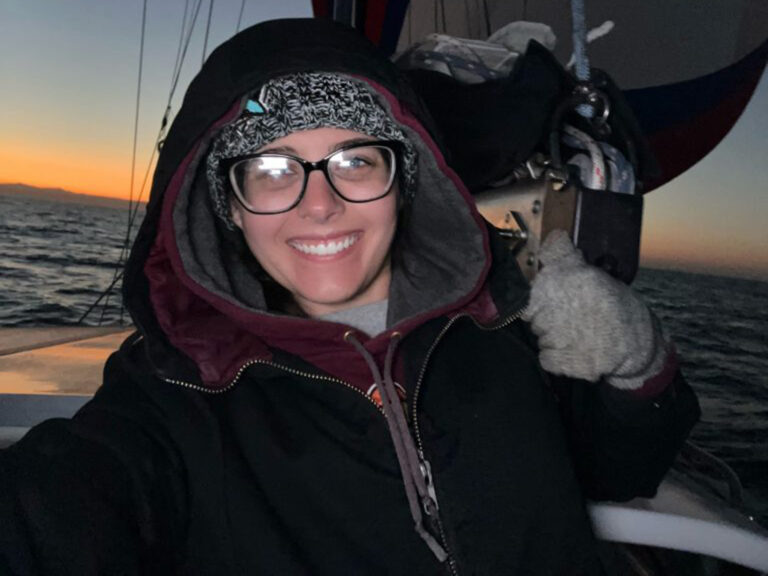Whatever else has been going on in the world, over the last few years boatbuilders have been oozing with confidence and popping out new models with clockwork regularity. Weve consistently had upward of 30 boats to scrutinize for our annual Boat of the Year (BOTY) competition, and thats after several have been scratched from the entry list on the sole basis of being unavailable at testing time (which usually means theyve been sold and their owners want to go sailing). This year is no different. Weve received announcements of over 40 new boats, and once again well have 30 or so for our team of judges to mull over.
Among these new boats, were seeing the same design trends tending further, but no stunning innovative breakthrough, so it seems that the confidence to build new models is moderated by conservatism in their execution.
This years offerings reinforce what weve observed in previous years: 30 feet is as small as mainstream production builders feel they need to go. What was once considered midsize is now the threshold size. If youre looking for a pocket cruiser, youll have to dig a little deeper and go to one of the smaller builders that doesnt bring out a new model every year. Deck saloons are proliferating, even among the ranks of builders that take a more traditional view of the aesthetic and accommodations aspects of cruising boats. And were seeing a resurgence in the cruiser/racer genre, thanks to a large extent to the popularity of PHRF and other handicapping systems that dont encourage rule-driven hull shapes and rigs.
Catamarans are still bigand getting bigger.
Multihull Choice
Topping out the multihull list this year is the Moorings 6200, built by Robertson and Caine in South Africa. Destined for the crewed-charter fleet, it has four double cabins plus crew quarters and is operated from a flybridge with a wraparound windshield.
Another luxury offering is the
French Privilege 585 from Alliaura (formerly Jeantot) Marine. With a floor plan as big as many downtown lots, it offers comfort and space to spare on deck and below.
Also from South Africa is the
Voyage 580. Its little sister, the 440, brought Voyage Yachts the overall BOTY award last year, and the 580 is visibly of the same family, down to the large arch that carries the mainsheet traveler over the top of the cockpit and the activity (or lounging) that goes on there.
Next on the list is the
Switch 51, from French builder Sud Composites. Almost workboatish in its rectilinear but functional deck and cabin layouts, it presents a styling quite different from that of most of its compatriots. It’s intended for long-distance cruising, and its daggerboards suggest qualifying that with “fast.”
Lagoon continues to refine its definition of the cruising catamaran in the revamped
Lagoon 470, retaining the characteristic vertical windows that reduce the amount of heat-making sunshine that enters the saloon. Owners can choose between three layouts, two with the galley in the deckhouse and one with it in the port hull; each has been laid out by interior designer Xavier Faÿ.
While the French and South African catamaran builders largely target the charter market, Canadian PDQ Yachts has taken aim at individual owners and tailored the new
Antares 42 (the company’s biggest model) to offer cruising comfort and speed for a smaller party of sailors.
The
Island Spirit 40, built in South Africa by Fortuna Catamarans, is distinguishable by the pronounced rake of its mast, approaching that of the European racing multis. For this model, designer Phil Southwell has stretched the stern of the Fortuna 37 to give the boat a longer sailing length and to improve the ergonomics of the transom steps, not to mention increasing the engines’ horsepower to 27 each.
In the
Lavezzi 40, Fountaine Pajot has taken another look at deck topography in the high-traffic area and put the afterdeck and cockpit on one level, two easy steps down from the side deck. Designer Olivier Flahault has also added some new twists to the saloon and galley.
The 35-foot
ClipperCat offers an unusual take on catamaran layouts. Where we’ve come to expect a bubble covering a saloon, it has its cockpit, and the saloon is in the port hull along with the galley. The starboard hull is devoted to an owner’s stateroom, nav station, and a fully fitted head and shower that includes a bidet.
Judging by the
True Wind 32, it appears that the smaller catamarans are the current crucibles of innovative thought. From the rotating carbon mast to the hydraulic folding mechanism that makes it trailerable, this cat is loaded with head-turning remedies for designers’ headaches.
And for those who need three hulls, the Contour 50 has them, the stability and rapidity that implies, and plenty of room to boot.
Meanwhile, the doyen of folding-trimaran builders has upped the ante with its biggest yet—the Corsair 36. Offered as a bluewater cruiser, it has a roomy interior and the potential to skitter across oceans at double-digit speeds. On top of that, it folds to fit into a standard marina berth.
The Small Stuff
In the
Horizon Cat, the only offering this year under 30 feet, Com-Pac Yachts brings some latter-day thinking to the traditional Cape Cod catboat but sticks with the gaff rig for its suitability—low center of effort—to this type of craft. There’s no centerboard trunk dividing the cabin, as the board is contained within a stub keel. A cozy cabin and roomy cockpit beckon for long weekends of glorious gunkholing.
Just as many vendors no longer offer a small coffee, boatbuilders are redefining the adjective as it pertains to sailboats. There may be few under 30 feet, but theres a host of new cruising models between 30 and 35 feet.
Jeanneau has introduced two models in this range. The
Sun Odyssey 32 and the
Sun Odyssey 35 will both come in under $100,000, which could qualify them as “entry level” new boats for those who’ve perhaps cut their teeth by owning older, smaller boats.
Catalina Yachts pushes up the bar for 35-footers with its new
Catalina 350, which continues the genre of its successful 310. Within this beamy—13 feet—hull are spacious accommodations marked by a huge galley, a stall shower, and the company’s signature innerspring mattresses on the big double berths, both in forward and aft cabins.
Etap, the Belgian company that builds unsinkable boats, has come up with a steering system that might just sink all others. Its a vertical tiller, similar in principle to the launchmans stick but oriented athwartships. Called the EVS (Etap Vertical Steering), its a featured option aboard the new
Bavaria Yachts of Germany has also joined the fray with the roomy Bavaria 32, which boasts two double-berth cabins in addition to a pair of settee berths in the saloon.
A relative newcomer to this side of The Pond is another German builder, Yachtzentrum Greifswald. This year, its introducing a pair of “small” boats, the
Hanse 311 and the
Hanse 341. Designed by Judel/Vrolijk & Co., they feature conservative profiles reminiscent of Yankee-built boats, easily handled fractional rigs with nonoverlapping jibs, and “Herreshoff” interiors—white-painted bulkheads with mahogany trim.
The Late 30s
One of two new models from Dufour, the
Gib’Sea 37 is available in a two- or three-cabin layout. It’s recognizable by the short anchor-sprit deck extension, which has become a distinguishing mark of the Gib’Sea marque.
Sharing the size bracket is the Hanse 371, which also bears the characteristics of its smaller siblings, and the Bavaria 36, which is offered in a two-or three-cabin arrangement.
The 40s
On reaching this psychological landmark, we again find there’s a crowd among which to choose.
The
Gib’Sea 41 has a three-cabin setup with the option of one head per cabin, whereas the Hanse 411 has a two-cabin layout with an option for a third.
Bavaria Yachts has two new models in the range, the aft cockpit
Bavaria 41 and the Bavaria 44 Ocean Center Cockpit, which has a huge aft cabin for liveaboard comfort.
From Sweden, and with that solid, chunky, handsome, Scandinavian look, comes the
Malo 41. It has a hard windshield, which works handily in conjunction with the mainsheet’s targa arch (the company’s words) to support a North Sea-proof cover for the aft cockpit.
Hunter Marine is seeking to distance itself from the other big builders and has followed up the build and finish upgrades the company introduced last year by loading many amenities and extra featuresflat-screen TV and hard windshield, for exampleinto the new
Sabre Yachts has again teamed up with designer Jim Taylor. The
Sabre 426 has cruising accommodations—large, protected galley, sea berths, and big nav station—in a hull that, because of the Taylor touch, will assuredly be rapid around the buoys and across the bays.
Notable features on the
Beneteau 42 Center Cockpit, latest in the new-style line designed by Groupe Finot, are the hard windshield—a novelty from this builder—and the “classic” transom, which permits a huge afterdeck for sprawling while concealing a nifty fold-down boarding and swimming step.
The
Hallberg-Rassy 43‘s elegant exterior, shaped by the confident and deft pen of German Frers, encloses a functional, traditional seagoing interior. A long waterline and moderate proportions promise cruising sailors passages consumed with long, comfortable strides.
Rarely seen on this side of the Atlantic, the Southerly range has featured a swing keel since 1978. Now, the United Kingdoms Northshore Yachts is introducing the new
Southerly 135 Series Three. It’s beachable, and this should appeal to U.S. East Coast denizens with access to endless barrier-island beaches.
In producing the Tartan 440, Fairport Yachts has broken new ground by giving it a raised saloon—a first for Tartan—and laying up the hull with epoxy resin, something usually reserved for racing or high-end custom boats.
The Swedish
Najad 460 has a conventional center-cockpit layout and enough displacement to carry a full cruising payload with ease.
A lightweight, advanced-composites structure allows the
Aerodyne 47 to pack cruising comforts into a long-legged, low-displacement hull that’ll eat up passage miles under an easily handled, big-mained sail plan.
For the
Island Packet 485, the company’s biggest boat to date, Island Packet has chosen a center-cockpit/raised-saloon configuration. It’s aimed at the cruising couple looking for lots of room and has the IP trademark huge galley, big saloon, and vast aft stateroom. Guests on board won’t feel like second-class citizens in almost equally spacious forward quarters.
Fast Acts
While most cruising sailboats today sail faster than their predecessors of only a couple of decades, there’s still a clear division for those designed specifically to perform. These boats usually have more spare, though not necessarily spartan, cruising accommodations.
Sydney Yachts, purveyors of performance from the Antipodes, is introducing the Sydney 32, a one-design racer with enough belowdecks amenities for a couple or two to do some speedy weekend cruising in reasonable comfort.
The
Quest 33S, from Holby Marine, is a refinement of the Rodger Martin-designed Quest 33, which found a following among doublehanders and small families that like to cruise between races.
Also from the board of Rodger Martin is the
Aerodyne 43, big sibling to the Aerodyne 38, which, living up to the builder’s motto, “Win some, cruise some,” has seen considerable success in Bermuda races, both singlehanded and crewed.
The
IMX-45 offers more of what we’ve come to expect from X-Yachts: spanking performance and a crisply made functional interior. It also goes another step or two toward pandering to the cruising sailor by raising the levels of comfort and finish and providing space for a generator and other amenities.
With the
Swan 45, Nautor goes back to basics (Swan basics, that is) and delivers a clean-cut thoroughbred racer with a luxurious cruise-capable interior and high-tech refinements that include a carbon-fiber spar.
The Wally 60, built by Carroll Marine in Rhode Island, is the baby of the aristocratic Wally line, and it’s laid out above and below with an ascetic’s approach to aesthetics. Intrinsic to the Wally concept is the elimination of clutter, to the point that all sheets and control lines run beneath the deck in raceways.
Semicustom Sensations
The Maine-built
Morris 46RS is a rework of the Morris 46, this time with a center cockpit and a raised saloon. It has the traditional profile long associated with Chuck Paine’s designs for Morris and a conservative interior to match, finished to the company’s mark-setting standard.
From Spain, home to a number of unsung boatbuilders, comes the** North Wind 58**, a Sparkman & Stephens raised-saloon design offered as a sloop, cutter, or ketch and with a variety of interior layout options.
Topping out the luxury class this year is the Gerard Dykstra-designed Bestevaer 65S, built by K&M Yachtbuilders of the Netherlands. Combining retro-classic looks with modern hydrodynamic thinking, and built in aluminum in the land of the masters of that medium, it comes loaded with hydraulic headsail furlers and a full Brookes & Gatehouse nav package. Just bring the Heineken, though at $1.3 mil, that ought to be already on board and ice-cold.
Jeremy McGeary is a Cruising World associate editor.

